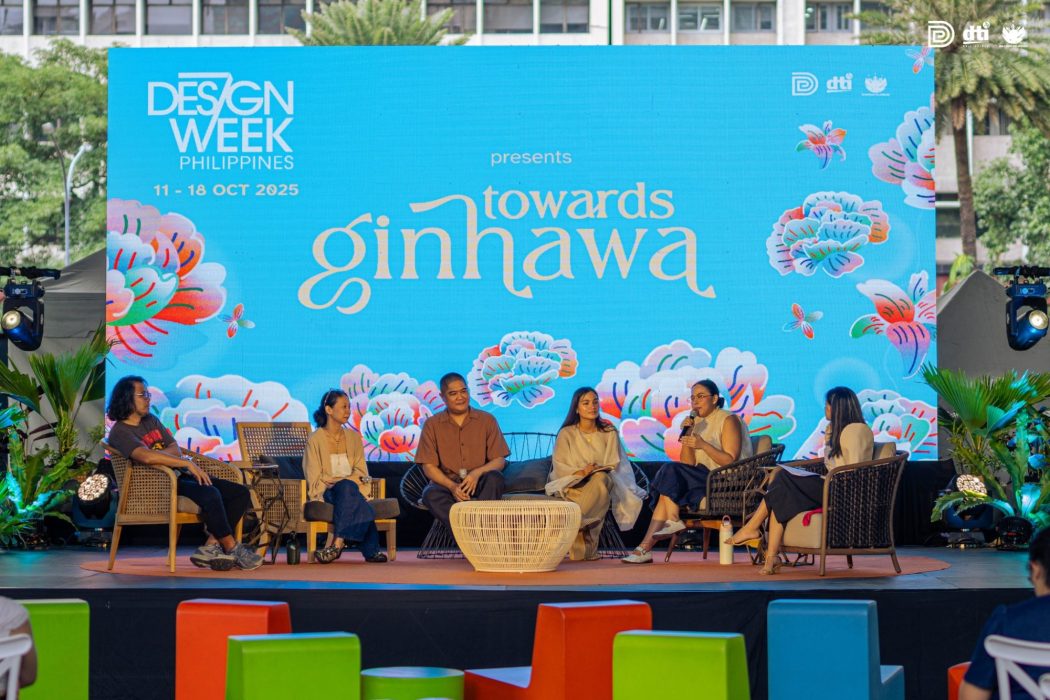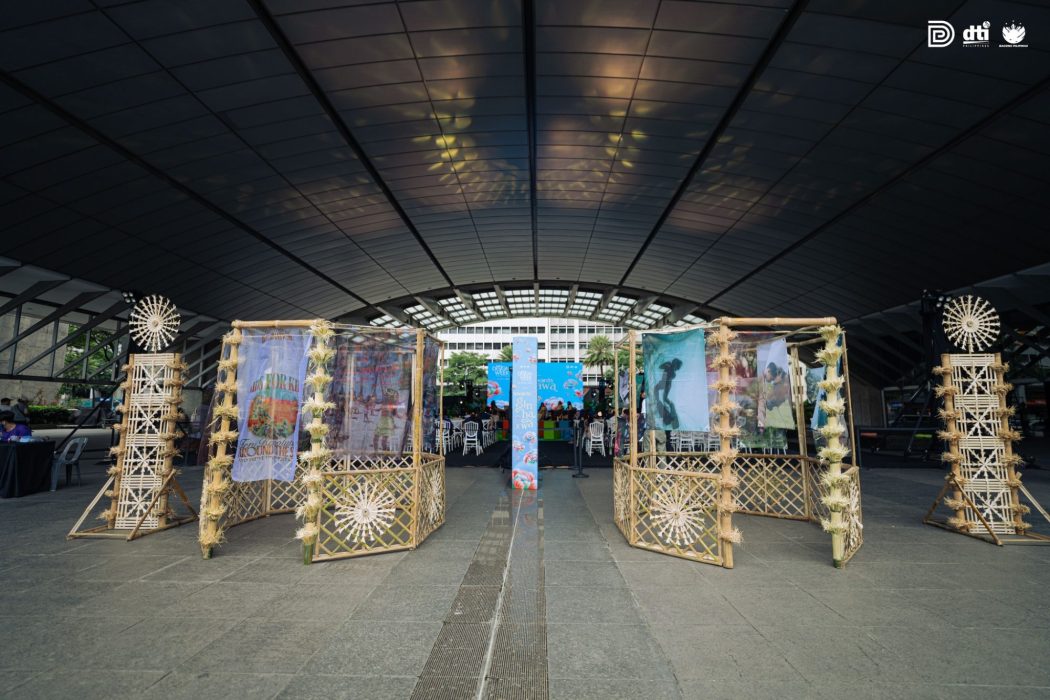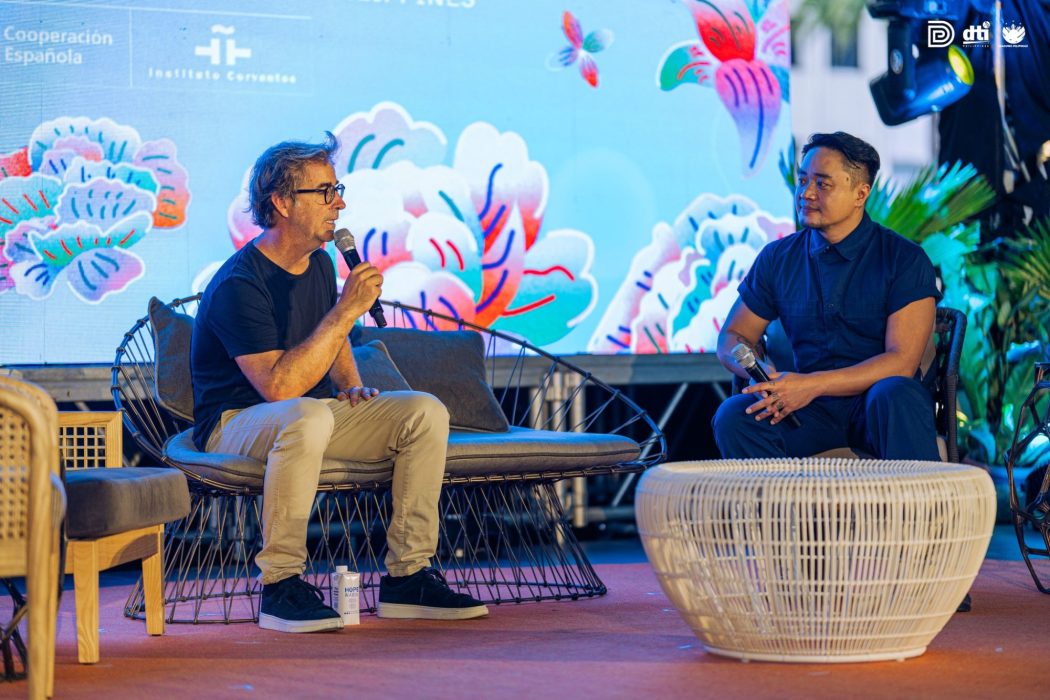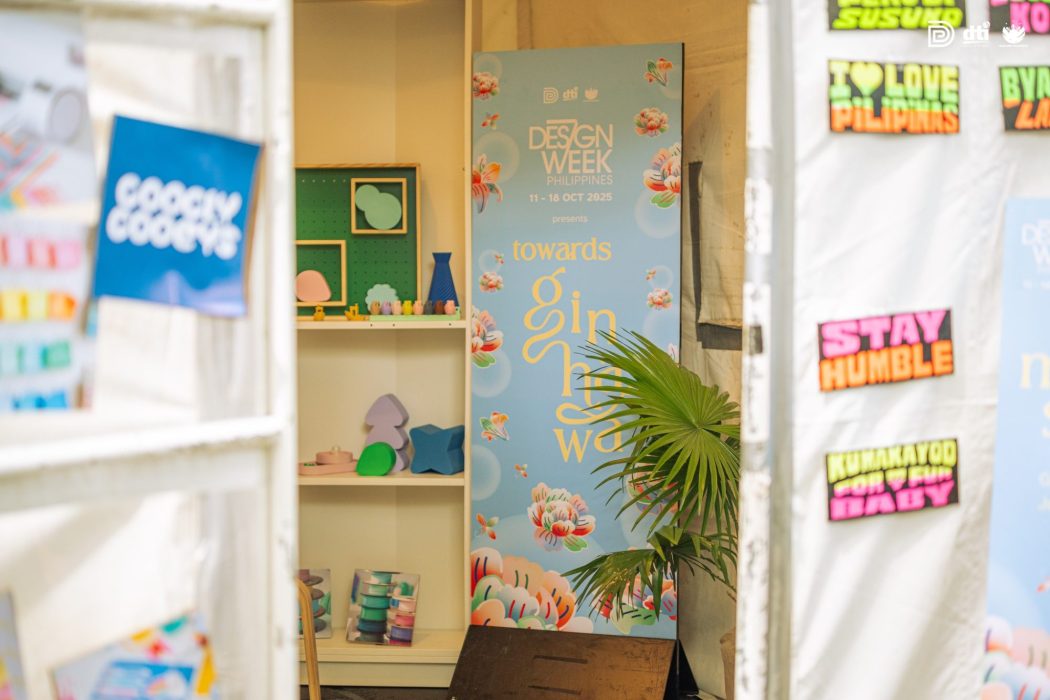Marking its 14th year, Design Week Philippines 2025 reaffirms its role not just as a festival, but as a national movement that champions Filipino creativity, democratizes design, and nurtures ginhawa: a deeply Filipino concept of holistic well-being, prosperity, and purpose.

(L-R) Dan Matutina, Co-founder, President, & Designer, Plus63/Hydra Design Group; Corinne Serrano, Co-founder and Partner, And A Half; Jowee Alviar, Co-founder & Creative Director, Team Manila; Natasha Tanjutco, Co-founder & Designer, TAYO; Karina Abola, Strategy Director, Dapat Studio; Nicole Datlangin, Designer, Dapat Studio (moderator)
Organized by the Design Center of the Philippines under the Department of Trade and Industry (DTI), this year’s theme, “Towards Ginhawa,” signals a shift from design as a centralized craft to a collective force for inclusive growth, cultural expression, and sustainable innovation.
From 11-18 October, Design Week Philippines unfolded across the country, beginning at Ayala Malls Circuit, Makati and culminating at Ayala Triangle Gardens. The week featured talks, workshops, tours, and the much-awaited Design Sari-Sari, each one a testament to design’s power to connect, uplift, and transform.
But the heart of DWP 2025 lay in its reach: 136 events, 145 partners, and 45 cities and municipalities across 17 regions. From Bontoc to Tawi-Tawi, regional design weeks ensured that creativity thrived not only in urban centers but in communities nationwide, affirming that Philippine design is local, global, and everywhere in between.
DTI Secretary Cristina Roque, speaking at the opening, emphasized design’s economic potential. “Design is a force of good. It builds communities, strengthens industries, and uplifts lives. This year’s theme reminds us that design is not only about solving problems; it’s about creating conditions where people and the planet can flourish together.” She noted that the creative industries generated PHP 1.94 trillion last year, with expectations for increased budget allocation in 2026.
Shaping the Philippine economy through design
Throughout the week, leading designers and experts ignited creativity and conversations by sharing insights – from the state of design to the nuances of local craftsmanship, all with the power to transform the economy and drive innovation for the comfort of every Filipino.
In “The State of Philippine Design,” experts explored how design can help shape the country’s economy by improving experiences, driving innovation, and creating opportunities.
DTI- Design Center Deputy Executive Director Lucky Lopez highlighted a major shift: with the evolution of digital technology, creative work can now be fully produced and monetized online. This development is crucial as it means designers no longer have to relocate to Manila to thrive.
Designers and related professionals can work from anywhere in the country, allowing creative industry jobs and revenue to be generated while strengthening the regional economy and fuelling the whole country’s economic growth.
Meanwhile, Ayala Land project development manager Misha Quimpo and Sikodiwa author Carl Cervantes emphasized the importance of enhancing experiences and innovating for humanity as it helps shape lives and communities for collective flourishing.
“Filipinos are known for their inherent kindness. If it’s reflected in design, we’d be known internationally as designers who care about details and nuances and we could become a design hub [in the future], and that would impact the economy in a big way,” said moderator Gina Alfonso.




Spanish designer Héctor Serrano, recipient of the 2024 National Design Award for Lifetime Achievement and Jodinand Aguillon, Manager of Hub Make Lab and Cultural Director behind the vintage & reworked textile brand Glorious Dias
Designing for a greener future
Design doesn’t only help shape the economy, but also the future. Renowned Spanish designer Héctor Serrano underscored the importance of sustainability and innovation in his creation, the TIERRA pendant light.
The 3D-printed lamp has less amount of carbon footprint than a traditionally manufactured one. Made of PLA, a bioplastic of vegetable origin, and cellulose, the lamp is shaped like a bees’ nest to reinforce the importance of pollination in protecting biodiversity.
Another sustainable product he designed is a portable travel toothbrush made of bamboo, which naturally absorbs water and repels bacteria. He highlighted the role of design in addressing climate issues.
This insight is echoed in the discussion, “Greenhawa Futures,” where the panelists envisioned a green future in which designers cultivate, nurture, and protect all forms of life.
DTI-Design Center supervising industrial design specialist Stephanie Padilla noted that designers can be innovative and progressive without compromising nature. They can work on products while being mindful of how they will impact the environment, the community, and the future generation.
Meanwhile, architect and planner Joevic Mondejar called on designers to create without destroying nature.
“We need to make sure that we don’t reduce, we don’t destroy. We need to restore the ecosystem. I dream of a green future where every city breathes again, where there is an accessible open space and public parks for everyone,” said Mondejar.
The commitment to sustainable design means creating products that serve better purposes while actively protecting life and community, and designers have the power to innovate for a greener future.
The collective insights at the Design Week Philippines 2025 affirm the crucial role of design in driving sustainable innovation and transforming the economy, leading to collective flourishing. It serves as a call to utilize design as a catalyst for change and a promise for a wealthier, better, and greener future for the ginhawa of every Filipino.


